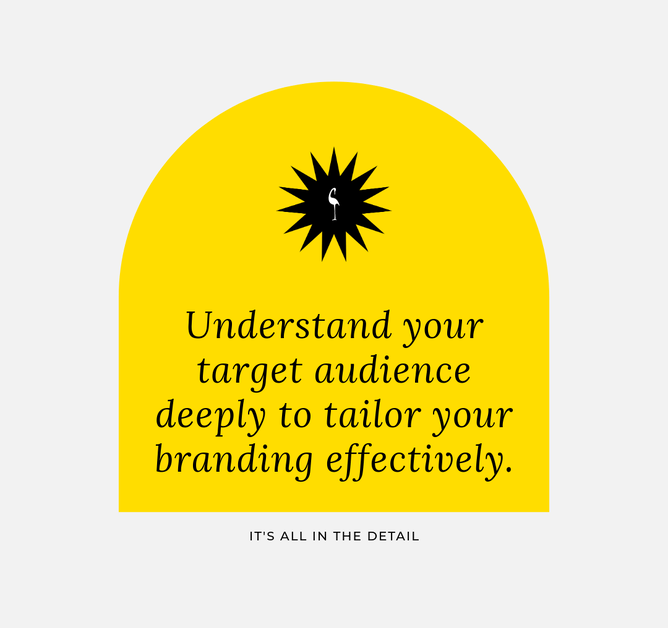Understand Your Target Audience
Creating visually appealing branding materials is only half the battle. Understanding your target audience inside and out, is the other half. After all, your designs won't relate if they don't speak directly to the people you're trying to reach. So, let's begin to understand your audience and tailor your branding efforts effectively.
Understanding Your Audience Matters
You can't hit a target blind folded. The same goes for designing without an understanding of your audience. Here's why it's so important:
Relevant: Your audience wants to feel understood and valued. By knowing their needs, and pain points, you can create content that really resonates with them.
Unique: Understanding your audience helps you stand out by creating content that speaks to your people.
Connect: Good brands build emotional connections. When your audience feel like you understand them, they are more likely to interact and engage with you deeper.
How to...
Now we know why it's important, let's explore how to achieve it:
Research, Research, Research: Start by gathering data on your target demographic. Who are they? What do they like? Where do they hang out online and offline? Questionnaires and social media analytics are valuable tools here.
Create Your Dream Clients Profile: Give your dream client a name, age, job, interests, and pain points. This helps you to understand your audience on a human level and keeps them top of mind.
Empathy: Put yourself in your audience's shoes. What do they see, hear, say, do, think, and feel? Understanding their mindset allows you to tailor your designs to their unique perspective.
Customising Your Branding Efforts
Put your knowledge into action:
Visual Language: Choose colours, fonts, imagery, and design elements that resonate with your audience. For example, a youthful audience might respond well to vibrant colours and playful fonts, while a more corporate audience may prefer modern, clean and professional design.
Messaging: Create your brand's voice and messaging to speak directly to your audience's wants and needs. What are they looking for? Security? Adventure? Your messaging should align with their desires.
Most Active: Consider where your audience spends their time and tailor your branding efforts accordingly. If they're active on Instagram, focus your efforts there. If they prefer LinkedIn, adjust your strategy to fit the platform.
By understanding your audience deeply, you can create branding materials that resonate on their level, creating strong connections and meaningful engagement.




